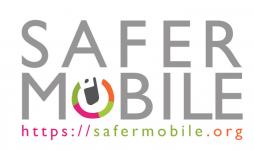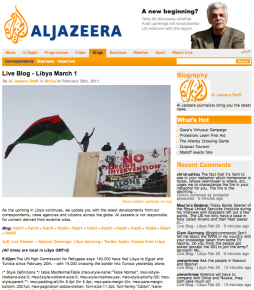social media
Posted by ccarlon on Nov 18, 2011
The Power of Social Media in Developing Nations data sheet 1237 Views
Abstract:
On January 28, 2011, Egypt’s President, Hosni Mubarak, took the drastic and unprecedented step of shutting off the Internet for five days across an entire nation. His reason for doing so was simple: to halt the flow of communication and coordinated assembly taking place over social media platforms, like Facebook and Twitter. That Mubarak took this desperate step — which cost Egypt an estimated $90 million and outraged the international community — demonstrates the incredible power of social media. Mubarak’s decision to shut off the Internet took place after three days of demonstrations by tens of thousands of Egyptians. Although the demonstrations were centered in Cairo’s Tahrir Square (or “Liberation Square”), there were also substantial demonstrations in Alexandria, Mansoura, and Suez. The protesters expressed outrage over several issues, including state corruption, police brutality, and economic oppression. Their demand was clear: President Hosni Mubarak must leave the country.
Various groups, including April 6 Youth Movement, We Are All Khaled Said, National Association for Change, and Kefaya led a coordinated effort using social media platforms, including Facebook and Twitter, to spread a revolutionary message. Prior to the first day of protest, 85,000 Egyptians pledged on Facebook to attend “Revolution Day.” Similarly, April 6 Movement had over 90,000 members during the protests, and We Are Khaled Said had over 40,000 Facebook fans. In the two weeks leading up to and including the first few days of the protest, Egyptians created 32,000 Facebook groups and 14,000 Facebook pages. It is likely that a substantial number of the five million Facebook users in Egypt were in some way encouraged to attend the protests.
Posted by kelechiea on Nov 18, 2011
The Role of Mobile-Enabled Social Media in Social Development data sheet 687 Views
Abstract:
A number of countries recently experienced protests organized by citizens that were in pursuit of accountability and openness from government. It was witnessed that social media played a highly important role in those events; among others, continuously providing updated information, establishing human networks, forming opinions, mobilizing people, and taking concerted actions.
Of course, social media is not the sole reason that made the events happen. However, it can be at least said that the general public were encouraged to move into the actions for their enhanced well-being. From a broader perspective, those occurrences also showcase that Information & Communications Technologies (ICTs) can help enhance social development among people.
This short note seeks to develop analysis on the role of social media in social development, in the wake of the increasing diffusion of mobile phone Internet access.
Posted by AnneryanHeatwole on Oct 27, 2011
Today's Mobile Minute brings you coverage on India's mobile growth, smartphones in Asia, the relationship between social media and mobile phones in America, Nokia's global sales report, and the rise of open data projects in the United Kingdom.
- Reuters reports that mobile subscriptions in India are on the rise; in August alone mobile phone operators added 7.34 million new subscribers, bringing the country's total number of mobile subscriptions to 865.71 million. However, now that roughly 70% of the country's population has a mobile phone, the number of new subscribers is rising more slowly than last year as the market becomes more saturated.
- The mobile and smartphone market in the Asia-Pacific region is growing rapidly, and Cellular News has the breakdown of current and projected sales: "The smartphone market is [...] expected to have healthy growth, with 24% share in total handset shipments in 2011, up from 17% in 2010. Smartphone shipments in Asia will see a significant growth of 56% in 2011, which indicates the growing demand for smartphones in emerging Asian markets. Smartphone shipments in Asian markets will see a boost for Android-based smartphones, with market share increasing to 52% in 2011, up from 16% in 2010. As a result, the combined market share of Samsung and HTC, the leading Android-based smartphone makers in Asia, will swell from 11% in 2010 to 24% in 2011."
Posted by MelissaLoudon on Sep 22, 2011
Particularly for smartphones, there are many apps that promise improved privacy and security for your mobile communications. Like all apps, some are very good, but other are poorly written or overpriced, and may even be malicious. This article will help you evaluate whether you should trust their promises.
Before You Start
Security apps are most useful as part of a coherent security policy covering all your mobile communications. The Mobile Risk Assessment Primer will help you complete an inventory of mobile communications risks, and decide which are most important and most feasible to mitigate.
Once you’ve completed a risk assessment, it’s important to search broadly for security apps. MobileActive is in the process of reviewing many of these from our current list of security apps, but the mobile security landscape changes quickly. Ask friends and colleagues, read about your specific security need online, and search your device’s app marketplace. Once you’ve identified as many options as possible, it’s time to start evaluating your security apps.
Will It Work on Your Phone?
As with computer software, some mobile apps are built to work on one platform - Android, iPhone, Blackberry, Symbian, Java - and may not work on others. There may be other requirements too, such as particular phone models. Make sure the apps you have chosen are all going to work on your device.
Also consider how you will actually get the app - can it be downloaded from a web link that you open on your phone, or can you get it from an app marketplace? Some apps can also be downloaded to a PC and transferred via bluetooth or a data cable. This step sounds obvious, but it can be tricky when you don’t have stable Internet access on your phone or aren’t used to the app install process.
Posted by SaferMobile on Aug 09, 2011
Safer Facebook data sheet 6165 Views
Abstract:
Facebook has more than 500 million users, half of which access the site through their mobile phone. Being able to communicate your message to an audience this large is exceptionally valuable. At the same time, your activities on the site generate very detailed information about you and your networks. If you are concerned about surveillance, this information can put you at risk. This how-to explains what those risks are and how to use Facebook on your mobile device more securely.
Facebook has more 500 million users, half of which access the site through their mobile phones. Being able to communicate your message to an audience this large is exceptionally valuable. At the same time your activities on the site generate very detailed information about you and your networks. If you are concerned about surveillance, this information can put you at risk.
Assess Your Facebook Mobile Risks
Like Twitter, Facebook is a way to get your messages to a potentially large audience. It is not a secure method of communication for sensitive information.
This article offers advice about how to mitigate risks when using Facebook as a dissemination and organizing tool. In particular, we consider the following risks:
- The risk that your public activities on Facebook reveal compromising information about you or your networks - for example, revealing the identity of supporters or identifying people who were present at a particular event.
- The risk of your private information being revealed to a third party without your consent.
- The risk that your account details (username and password) are discovered, and that someone may impersonate you.
- The risk of your account being deleted or suspended.
- The risk that Facebook is blocked or becomes inaccessible.
in general, you should only use Facebook to share information that you consider public. Public information can be freely distributed by you, your organization, and your supporters, without any risk to individuals or organizational operations. In communicating public information, you can send and receive this information without taking any precautions.
Posted by VivianOnano on Jun 06, 2011
Citizens in @ction: Collaboration, Participatory Democracy and Freedom of Information data sheet 1074 Views
Abstract:
The purpose of this research is to empirically examine the ways in which Indonesian civil society organisations and groups engage in civic activism by means of the use of Mobile phones, Internet and social media; and how this civic engagement impacts upon the shaping of civil society in Indonesia.
With technology and its use continuously shifting and being shaped, the appropriation of the Internet and social media in Indonesian civil society is more about process than outcome. The technologies are continuously modified and adapted to bring them into alignment with the organisations’ routines. ‘Citizens in action’ are therefore never fixed in format, but rather ‘constituted and reconstituted’ through the everyday practices of the civil society groups and communities involving citizens and activists alike in ongoing actions – where technology serves as a convivial means.
Posted by MarkWeingarten on Apr 04, 2011
Mobile Africa Report 2011: Regional Hubs of Excellence and Innovation data sheet 2030 Views
Abstract:
According to industry estimates, there are more than 500 million mobile phone subscribers in Africa now, up from 246 million in 2008. In 2000, the number of mobile phones first exceeded that of fixed telephones. Africans can accelerate development by skipping less efficient technologies and moving directly to more advanced ones.
The telecommunications sector continues to attract a flurry of public and private investment from foreign sources and local banks, but the investment should be in software and services, not just cabling infrastructure.
Posted by MelissaUlbricht on Mar 02, 2011
Recent events in Tunisia, Egypt, and Libya have been on the minds -- and on the screens -- of people around the world.
News organizations are covering the events in innovative ways, and people have noticed. More generally, the role of social media itself in protests and revolutions is also being debated. But, as Charlie Beckett writes on his blog, let’s “put aside the silly debate about whether Twitter 'caused' revolution and look instead at how it helped tell the story.” Twitter is just one platform being used to help tell the story, as we see from our conversation with Al Jazeera, one of the most innovative newsrooms in the mix.
Posted by AnneryanHeatwole on Oct 19, 2010
Today's Mobile Minute brings you news about the continuous lack of Facebook privacy, the disagreement between IDC and Nokia on Nokia sales figures in India, a ranking of the top five free Android apps for journalists, a TNS study that found social media trumps e-mail as the most popular use for online mobile activity, and mapping indoor spaces with smartphone apps.
Posted by MohiniBhavsar on Aug 18, 2010
Avaaj Otalo — A Field Study of an Interactive Voice Forum for Small Farmers in Rural India data sheet 919 Views
Author:
Neil Patel, Deepti Chittamuru, Anupam Jain, Paresh Dave, Tapan S. Parikh
Abstract:
In this paper we present the results of a field study of Avaaj Otalo (literally, “voice stoop”), an interactive voice application for small-scale farmers in Gujarat, India. Through usage data and interviews, we describe how 51 farmers used the system over a seven month pilot deployment. The most popular feature of Avaaj Otalo was a forum for asking questions and browsing others’ questions and responses on a range of agricultural topics. The forum developed into a lively social space with the emergence of norms, persistent moderation, and a desire for both structured interaction with institutionally sanctioned authorities and open discussion with peers. For all 51 users this was the first experience participating in an online community of any sort. In terms of usability, simple menu-based navigation was readily learned, with users preferring numeric input over speech. We conclude by discussing implications of our findings for designing voice-based social media serving rural communities in India and elsewhere.


